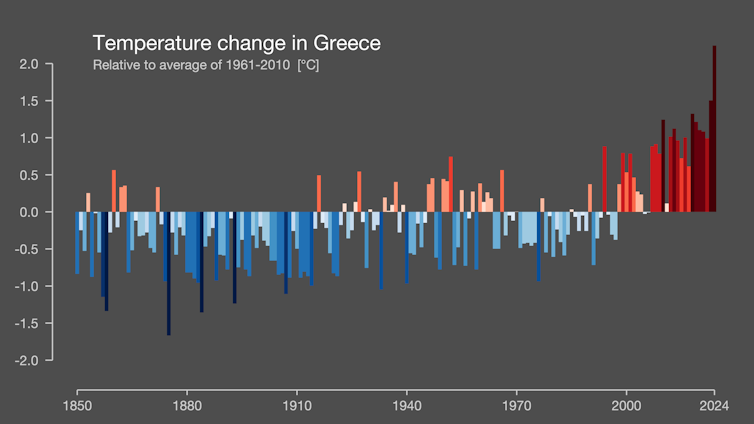Source: The Conversation – in French – By Treena Orchard, Associate Professor, School of Health Studies, Western University

Avec la chute spectaculaire du nombre d’abonnés, la hausse des coûts et des utilisateurs lassés de « swiper » sans fin, le monde des applications de rencontre traverse une véritable crise.
Les récents licenciements chez Bumble soulèvent des interrogations sur l’avenir du secteur et sur les alternatives pour les personnes qui souhaitent trouver l’amour et nouer des relations hors ligne.
L’une des alternatives les plus en vogue est le retour aux activités de rencontre en personne telles que le speed dating, les clubs de course à pied et les raves en journée.
Pour les millénariaux et les générations précédentes, les rencontres en personne sont un terrain familier, mais si vous faites partie de la génération Z – souvent décrite comme la « génération numérique » – ce n’est pas forcément le cas.
Ce fossé intergénérationnel est apparu clairement lors de la première conférence canadienne sur les technologies sexuelles, où j’ai fait une présentation sur la masculinité, les applications de rencontre et les alternatives au « swiping » en personne. Pendant la séance de questions, une jeune femme est intervenue avec un commentaire qui m’a interpellé : « Vous avez peut-être le privilège d’être extraverti », m’a-t-elle dit.

Chacun vit sa vingtaine et sa trentaine à sa façon. Certains économisent pour contracter un prêt hypothécaire quand d’autres se démènent pour payer leur loyer. Certains passent tout leur temps sur les applications de rencontres quand d’autres essaient de comprendre comment élever un enfant. Notre série sur les 25-35 ans aborde vos défis et enjeux de tous les jours.
Après un moment de flottement, la discussion a repris, mettant en lumière une réalité : pour beaucoup de jeunes, les rencontres en face à face sont difficiles. Nombre d’entre eux sont déçus par les applications de rencontre, mais n’ont pas l’expérience interpersonnelle que les générations plus âgées considèrent comme allant de soi.
Alors, que faire ? Dire à la génération Z de « sortir de chez elle » n’est pas seulement déplacé culturellement, mais cela pourrait également contribuer à accroître le sentiment de solitude et d’inutilité qui touche déjà un grand nombre de jeunes aujourd’hui.
Les rencontres en personne ont le vent en poupe
Si faire des rencontres via les applications vous semble devenu une corvée plutôt qu’une opportunité, vous n’êtes pas seul. Dans un article du New York Times, la journaliste Catherine Pearson encourage la génération Z à créer des communautés authentiques et à s’ouvrir à différents types de relations, en ne se limitant pas à la recherche de « l’âme sœur », une source de pression.
Certaines applications de rencontre ont d’ailleurs rejoint le mouvement. Par exemple, Hinge organise One More Hour, une initiative à impact social visant à aider les gens à nouer des relations en personne. Elle s’adresse à la génération Z, dont beaucoup déclarent ressentir de l’anxiété à l’idée d’interagir en face à face.

(Unsplash)
À force de vivre dans un environnement ultra-connecté, de plus en plus de jeunes trouvent rafraîchissant de rencontrer quelqu’un dans un parc, un bar ou une bibliothèque.
Ces rencontres spontanées ont aussi l’avantage d’éliminer les pratiques frustrantes des applications, comme le catfishing (l’action de créer une fausse identité en ligne). Il est révélateur que 38 % des membres de la génération Z interrogés dans le cadre d’une récente enquête souhaitent avoir accès à des espaces dédiés aux rencontres et à l’amour de soi au travail.
Comment une organisation repense les rencontres
Bien qu’elle ne cible pas exclusivement la génération Z, l’organisation We Met IRL, fondée en 2022 par l’entrepreneuse Maxine Simone Williams, joue un rôle clé dans ce renouveau des rencontres en personne.
Née d’une frustration vis-à-vis des applications de rencontre et au manque de diversité dans les espaces de rencontre traditionnels, We Met IRL organise des événements de speed dating, des soirées rencontres et des réunions sociales qui encouragent les relations amoureuses ou platoniques dans la vraie vie.
Cette évolution culturelle semble s’ancrer chez les jeunes, du moins aux États-Unis : une enquête récente indique que seuls 23 % des adultes de la génération Z ont rencontré leur partenaire via une application, les réseaux sociaux ou une communauté en ligne.
Si tant de jeunes se tournent vers les rencontres en personne, pourquoi est-ce encore perçu comme si difficile ?
Les rencontres en personne sont difficiles
Les rencontres en personne peuvent être difficiles pour plusieurs raisons. Parmi les principaux facteurs, on retrouve l’aspect performatif ou artificiel des interactions sur les applis, les défis liés au passage à l’âge adulte pendant la pandémie et une évolution des normes qui met moins l’accent sur les relations amoureuses.
Une étude que j’ai menée auprès d’étudiants de la génération Z a également mis en évidence un paradoxe : ils aspirent à des relations sérieuses, mais ont peur d’être trompés, « ghostés » ou blessés émotionnellement.
D’autres facteurs socioculturels entrent aussi en jeu : le recul de l’intimité et de la vulnérabilité chez les hommes affaiblit les structures relationnelles traditionnelles. Résultat : les jeunes générations, et les garçons, en particulier, sont décrits comme « perdus » et moins résilients sur le plan émotionnel.
À cela s’ajoute la montée en puissance des influenceurs misogynes et des politiciens qui dénigrent ouvertement les femmes, alimentant la radicalisation des garçons et des jeunes hommes.
Et oui, une partie de la gêne liée aux rencontres en personne peut s’expliquer par ce fameux « privilège de l’extraversion ». Une étude récente a révélé que la génération Z est plus timide que les autres générations, mais pas sans raison. Ayant grandi immergée dans la technologie des téléphones intélligents et les réseaux sociaux, la génération Z a eu moins d’occasions de développer ses compétences interpersonnelles.
Mais ce n’est pas parce que c’est difficile qu’il y a un problème. La connexion, la confiance et la vulnérabilité… tout cela demande de l’apprentissage et de la pratique dans un monde complexe qui ne crée pas toujours l’espace nécessaire.
Déjà des milliers d’abonnés à l’infolettre de La Conversation. Et vous ? Abonnez-vous gratuitement à notre infolettre pour mieux comprendre les grands enjeux contemporains.
Comment prendre confiance dans les rencontres en personne
En tant qu’ancienne jeune fille terriblement timide, je peux affirmer avec certitude que les catégories « introverti » et « extraverti » ne sont pas immuables. Les jeunes qui manquent de confiance en eux dans le domaine amoureux peuvent apprendre à améliorer leurs compétences en face à face et à réduire leur anxiété lors d’événements sociaux.
Voici sept conseils pour prendre confiance lors de rencontres en personne :
-
Préparez-vous à l’événement à l’avance, dans la mesure du possible.
-
Recadrez votre perception et votre ressenti face à l’incertitude : ne la considérez pas comme une menace, mais comme une opportunité de croissance.
-
Restez fidèle à vous-même.
-
Entraînez-vous à développer vos compétences sociales pour gagner en confiance.
-
Soyez attentif à votre langage corporel afin de vous montrer ouvert et accueillant.
-
Rappelez-vous que vous n’êtes pas le seul à avoir du mal à avoir confiance en vous.
-
Envisagez de demander l’aide d’un thérapeute si la peur ou l’anxiété sont trop fortes.
L’une des choses les plus utiles que vous puissiez faire est de repenser votre vulnérabilité : au lieu de la voir comme une faiblesse profondément enracinée, envisagez-la comme une porte d’entrée vers une meilleure compréhension de vous-même en tant qu’être relationnel.
Des outils tels que les tableaux de visualisation réflexive ou les exercices d’introspection peuvent vous aider à clarifier vos valeurs, vos objectifs et votre identité de façon plus profonde. Et ces pratiques de réflexion sont encore plus efficaces lorsqu’elles sont soutenues par des écoles, des communautés ou des organisations qui peuvent aider les jeunes à transformer les moments de risque ou de peur en opportunité d’exploration personnelle.
Car la résilience, tout comme un muscle, se développe avec l’entraînement. Il faut l’exercer et la mettre à l’épreuve pour qu’elle devienne une ressource essentielle. Avec un bon accompagnement et un espace sûr pour vous exercer, vous pouvez cultiver une confiance en vous durable et une conscience de soi solide, qui enrichiront tous les aspects de votre vie, bien au-delà des relations amoureuses.
![]()
Treena Orchard a reçu des subventions du CRSH, des IRSC et de l’Université Western, mais aucun financement de recherche n’a été accordé ni utilisé pour la rédaction de cet article.
– ref. Le retour des rencontres en personne… un défi pour la génération Z – https://theconversation.com/le-retour-des-rencontres-en-personne-un-defi-pour-la-generation-z-261540






